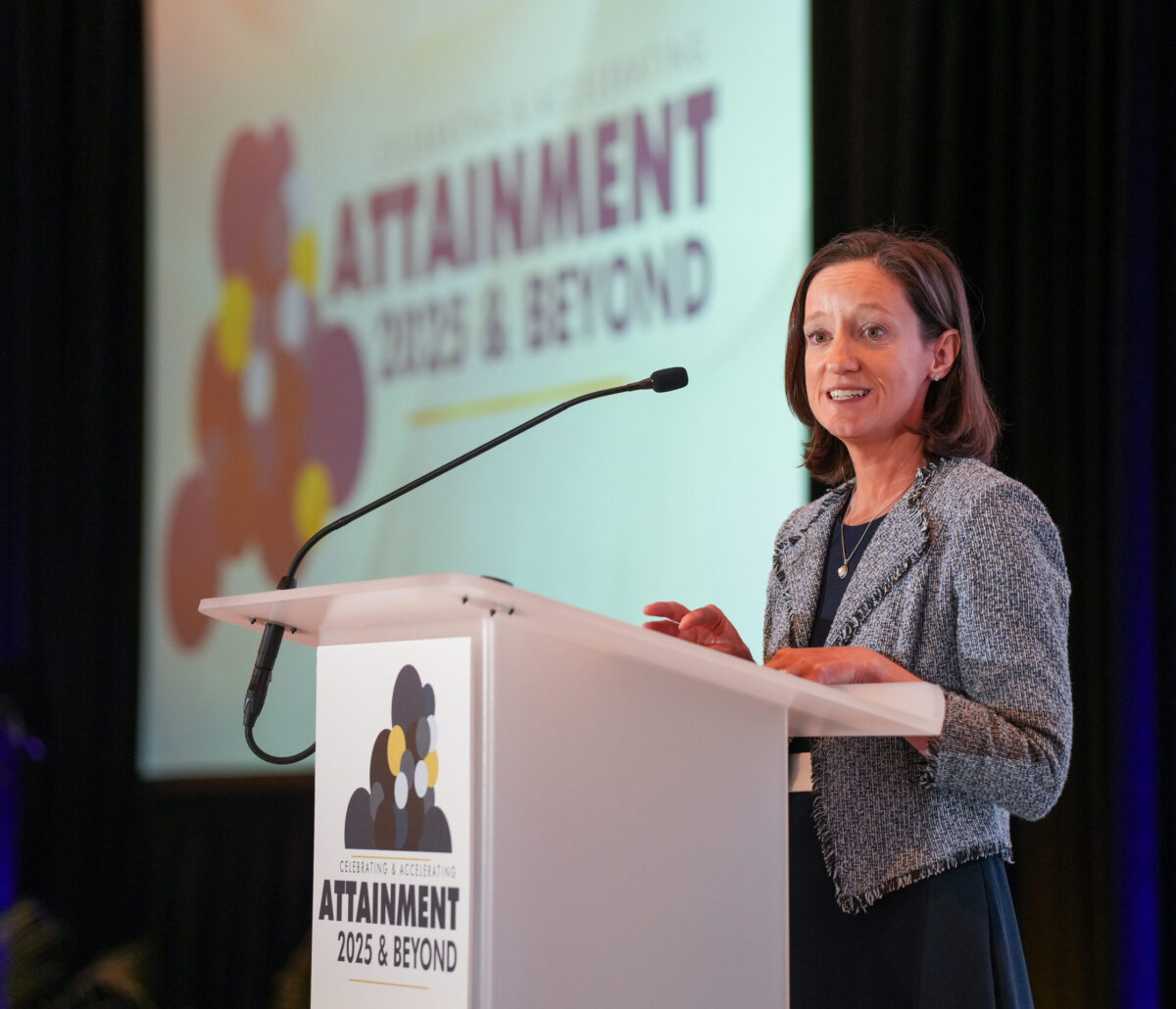Getting Through College
Published May 15, 2014
Washington, D.C., May 1, 2001—Low-income and minority college students who receive preparation and support are able to cope better with the most critical challenges to college success, but substantial increases in a wide range of support systems are still essential, according to a new regional survey. Currently, minority high school graduates attain bachelor’s degrees at half the rate of White high school graduates nationally, approximately 18 percent compared to 35 percent, according to Census data.
Examining the experiences and attitudes of students, the new study, Getting Through College: Voices of Low-Income and Minority Students in New England, focuses on four principal areas critical to staying in college and completing a degree: pre-college academic preparation; financial aid; connections to their institution; and attendance patterns. The study was prepared by The Institute for Higher Education Policy and funded by the Nellie Mae Foundation.
Key findings of the report include:
- While approximately 90 percent of the students surveyed received financial aid, knowing that their aid was forthcoming was instrumental for many staying in college. Student loans were the most common type of aid: 73 percent of the students received federal student loans. Among Pell Grant recipients—frequently those students with the fewest resources to pay for their education—91 percent received a federal loan.
- Coming into their first year of college, less than half of the low-income and minority students felt that they were academically well prepared.
- While only one-quarter of the students had participated in pre-college preparation programs, the majority of the participants found the experience to be helpful. The most commonly cited reason for not participating was that students did not know about the programs.
- Low-income and minority students who had work-study jobs were more involved on campus—they participated in clubs or societies and volunteered at rates higher than students without a job or with a job other than work-study.
"While many studies have focused on what factors influence students to either stay enrolled or drop out of college, this study focuses on a potentially at-risk population, currently enrolled low-income and minority students, to see what is working for them," said Jamie P. Merisotis, president of The Institute for Higher Education Policy, a Washington, DC-based research organization. “By looking at their experiences, we can learn the impact of existing programs, as well as those areas where support is lacking.”
The report was based on an original survey of 350 low-income and minority students enrolled in four-year colleges—as well as in-depth interviews—in the six New England states: Connecticut, Maine, Massachusetts, New Hampshire, Rhode Island, and Vermont.
"The barriers to success that low-income and minority students face are more pronounced in New England,” said Dr. Blenda J. Wilson, president and CEO of the Nellie Mae Foundation. “The concentration of private colleges and universities heightens the competition for admissions, and the higher average tuition and fees in the region overall make paying for college an even greater challenge. The Foundation felt it was critical to examine what first-generation, low-income, and college students of color attribute their success to, given the cumulative effect of these factors."
Recommendations
The report offers policy recommendations to address the specific issues that the findings raise. Major recommendations include:
- Increasing awareness of pre-college programs and greater support through additional funding.
- Linking existing efforts that address pre-college preparation, transition, and in-college programs to provide a continuum of support for students.
- Increasing grant aid resources at the federal, state, and institutional levels to lower the dependence on loans.
- Facilitating smoother transitions from one institution to another for transfer students.
- Expanding work-study programs to help integrate working students into the institution and help them finance their education.
- Increasing efforts to create a “campus community” that encompasses the needs of all students—particularly those who live off campus and at home—and connects them with the resources that they need to succeed, including new technologies.
- Creating assurances for students about the availability and timing of student aid to ease the potential negative impact of paying for their education on their ability to stay enrolled; and
- Targeting financial aid for students whose need is not met by current financial aid programs, specifically part-time and older students.


